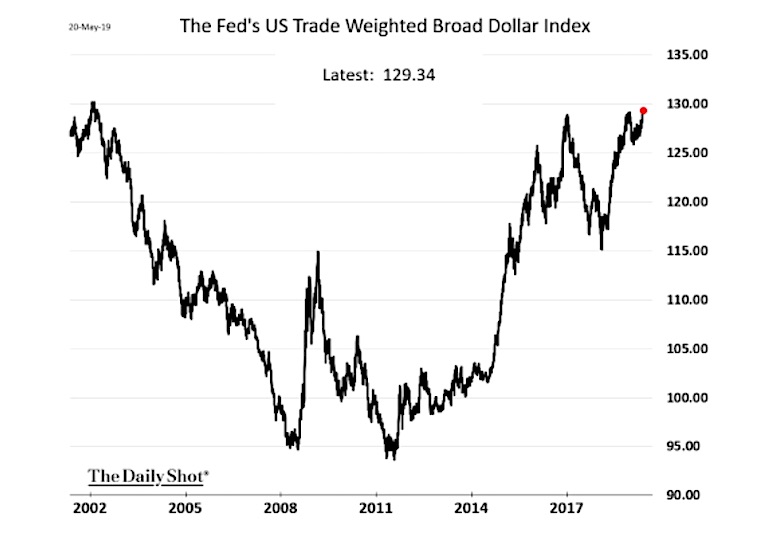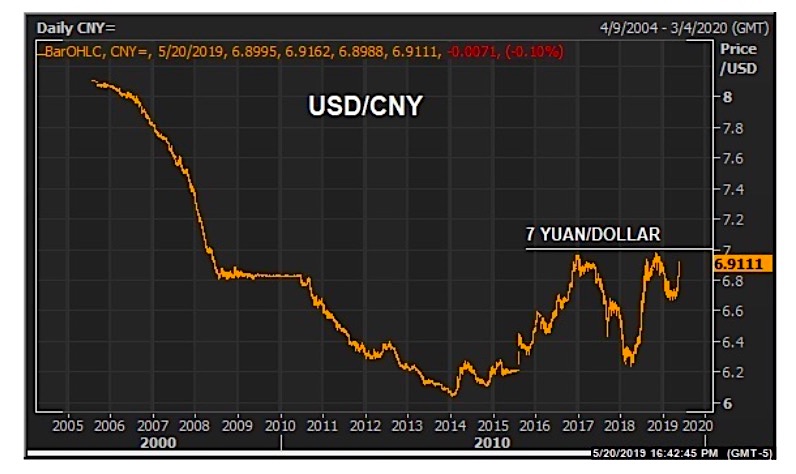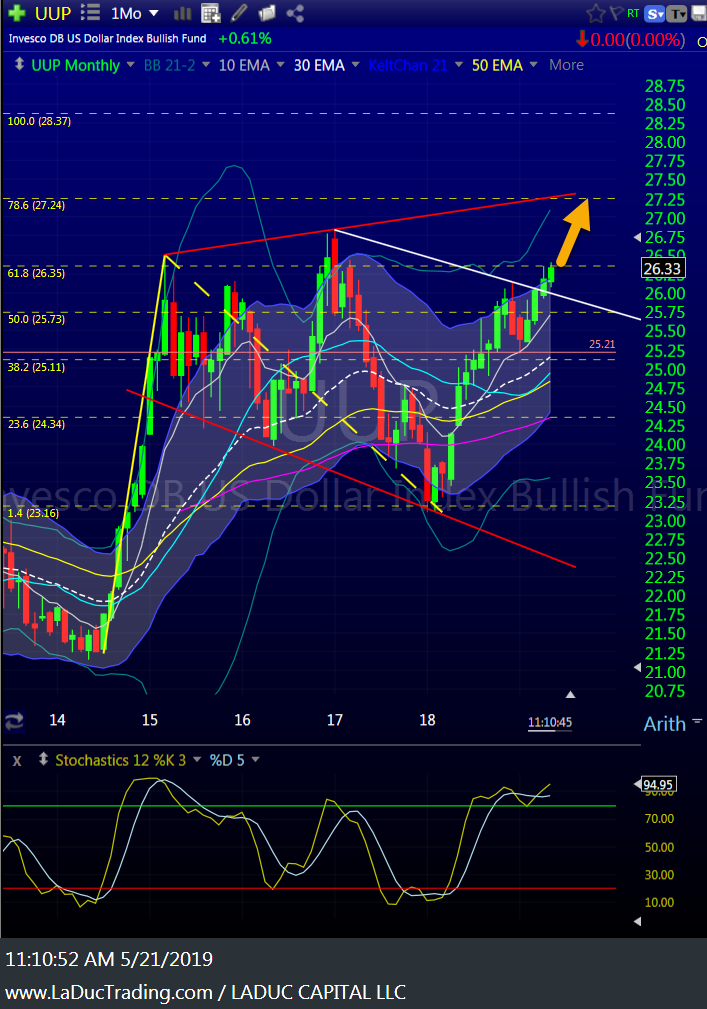I come across all types of commentary and analysis on the US Dollar during my waking hours. Few warrant my interest in recommending. Recently, I came across a well-written Bloomberg article – King Dollar is back on its throne .
My USD Triggers and Consequences
Here are the Top Five that hold my attention:
-
- Currency Trigger: Should China – by design or default – trigger a Yuan devaluation that rivals the August 2015 shock – $USDCNH can cause the USD to rise sharply and with it Volatility.
- Liquidity Trigger: The USD makes the weather but its ROC (rate of change) determines the severity. With that, a significant tailwind in a rising USD can trigger a short-covering in USD from EM panic. Why might EM panic? For the sheer fact that there is a shortage of USD they need to service their liabilities purchased in USD!
- Equities Trigger: Market weakness can prompt a safe haven run to USD (and Yen, but especially USD), which is actually a cruel closed loop for EM countries suffering from the above consequences of a strong USD!
- Interest Rate Trigger: Higher rates would impact the debt financing of both corporations and government, domestic and abroad, but higher rates are not an issue right now. However, the combo deal – of higher rates and USD – would cause a potential default and reset in our global financial system – a conversation we can revisit another time.
- Technical Trigger: The Fed’s Trade Weighted Real Broad Dollar Index is back to about its highest level since 2003 and global trade volumes are the lowest since the financial crisis.
A break, and we are probably into the next and most destructive phase of $ rally. – @RaoulGMI

Watching very very carefully…


A must follow on Twitter for Asian economic reports turned out to be a good thread and succinct summary of the effects of Higher USD on Emerging Markets:
Here’s the thesis as presented by @Trinhnomics
Approximately 60% of debt OUTSIDE the US is in USD.
As the Fed “tightens”, the dollar-denominated balance sheets around the world must do two things:
1. Hold and Hoard USDollars
2. Tighten/Take on less debt
So higher USD is defacto tightening for ROW.
It’s a case of “balance sheet recession” which can cause financial conditions that can spark real recession.
The USD is more important than trade-war.
Why? Because it lubricates not just global finance but also global economics.
There are 800trn transactions of USD so that is 3200 times the amt affected by tariffs
That is 40 times bigger than the US economy, 61 times bigger than China. So the USD matters.
So all these Asian countries w/ WEAK GROWTH had to raise rates to DEFEND THEIR FX. Why?
a) When the USA is growing strong, rates go up & earnings go up & $$$ chases higher return;
b) Capital becomes SCARCE IN EM;
Countries that need foreign investors to come plug the funding gap DO NOT LIKE A STRONG USD.
That’s part 1. Financial conditions.
Let’s talk about ECONOMICS. Why EM doesn’t like a strong USD.
Remember the J-curve?
MOST TRADE IS INVOICED IN USD. Most of China’s trade (exports+imports) invoiced in USD.
80% of global trade is financed by the USD.
So what happens when the USD rises & domestic FX falls?
ASSETS fall in domestic FX so banks look at VAR (value at risk) & says reduce lending.
A higher USD is NOT GOOD NEWS FOR EM b/c of both tightening of financial conditions & also IMPACT ON TRADE FINANCING.
The take-away from all of this:
The USD makes the (global) weather but its ROC (rate of change) determines the severity. @SamanthaLaDuc
